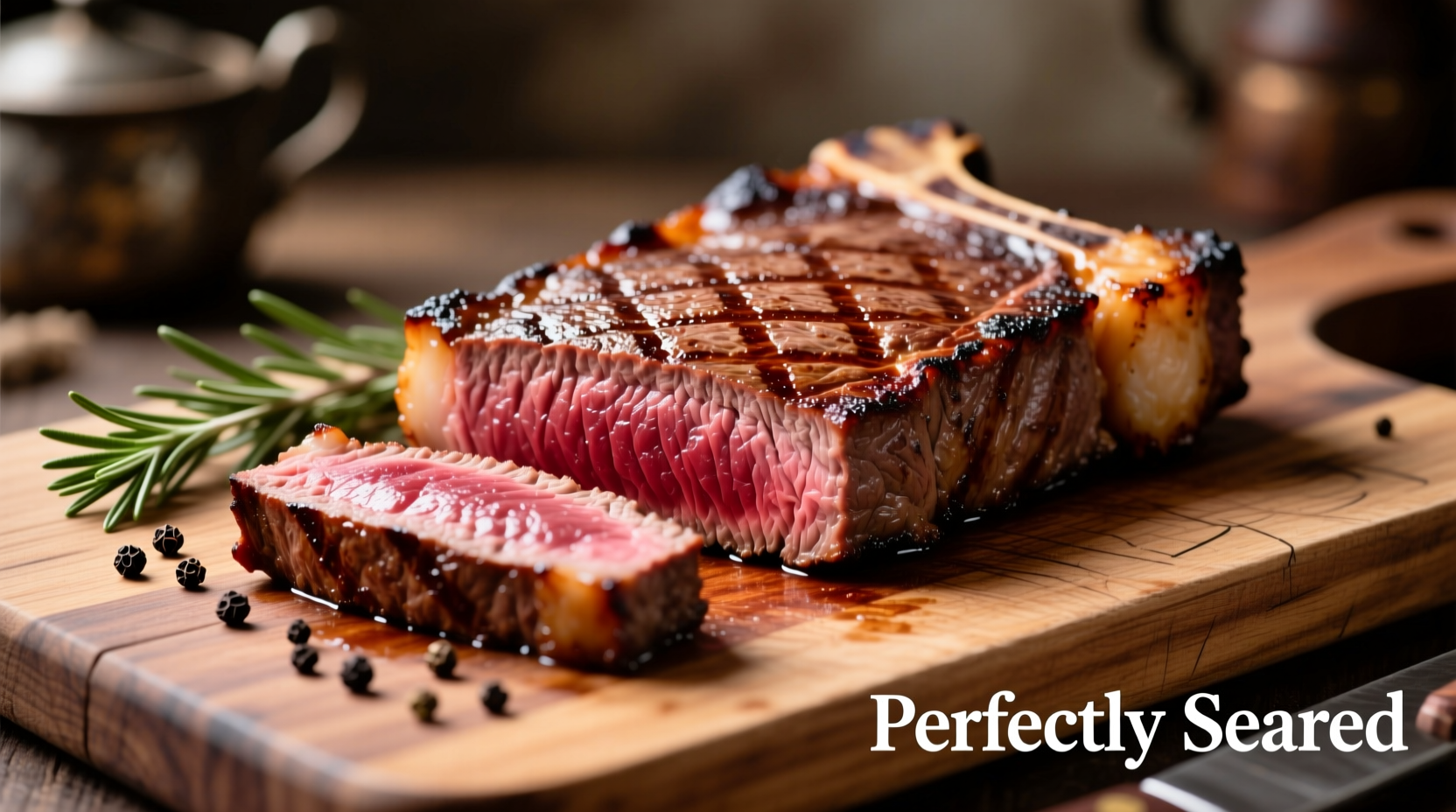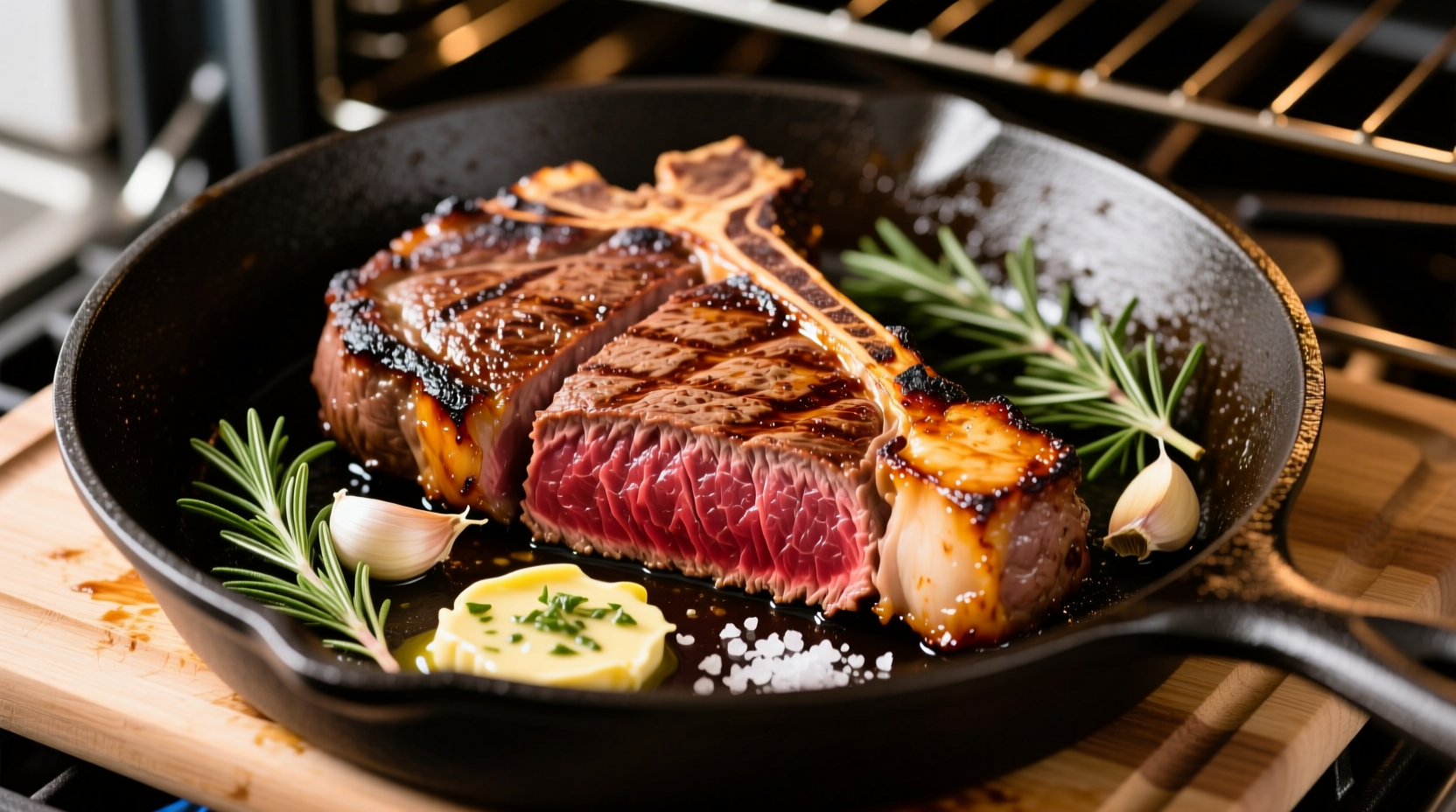Why Oven Cooking Beats Stovetop-Only for NY Strip Steak
While many home cooks rely solely on the stovetop, the oven method solves the biggest challenge with thick-cut steaks: uneven cooking. When you cook a 1.5-inch NY strip steak entirely on the stove, you risk burning the exterior before the interior reaches your desired temperature. The oven's gentle, consistent heat allows for precise control—critical for achieving that perfect medium-rare with a deep brown crust.
Professional chefs at establishments like the Culinary Institute of America recommend this two-step approach for cuts thicker than 1 inch. The USDA Food Safety and Inspection Service confirms that oven finishing ensures more even heat distribution, reducing the risk of undercooked centers while preventing overcooked exteriors.
Essential Preparation: Setting Up for Success
Before you even preheat your oven, proper preparation makes all the difference:
- Temperature matters: Remove steak from refrigerator 60-90 minutes before cooking. Cold meat won't sear properly and will cook unevenly
- Dry surface = better crust: Pat steak thoroughly with paper towels—moisture is the enemy of browning
- Seasoning strategy: Use coarse kosher salt (1 tsp per pound) at least 45 minutes before cooking to allow penetration
- Equipment check: Heavy cast-iron skillet (oven-safe), instant-read thermometer, and tongs
| Steak Thickness | Room Temp Time | Salt Application Time |
|---|---|---|
| 1 inch | 60 minutes | 45 minutes before |
| 1.5 inches | 75 minutes | 60 minutes before |
| 2 inches | 90 minutes | 75 minutes before |
Step-by-Step Oven Cooking Process
1. Preheat and Sear Properly
Preheat your oven to 400°F (204°C) with rack positioned in the center. Heat your cast-iron skillet over medium-high heat for 5 minutes until smoking slightly. Add 1 tablespoon high-smoke point oil (avocado or grapeseed). Place steak in skillet away from you to avoid oil splatter.
Sear undisturbed for 2-3 minutes until deep brown crust forms. Flip and sear the other side for 2 minutes. For maximum flavor, sear the edges for 30 seconds each using tongs.
2. Oven Finish with Precision
Immediately transfer the skillet to your preheated oven. Cook according to this timing guide:
- Rare (120-125°F): 6-8 minutes
- Medium-rare (130-135°F): 8-10 minutes
- Medium (140-145°F): 10-12 minutes
Insert an instant-read thermometer horizontally into the thickest part. The American Meat Science Association confirms that oven finishing at 400°F provides the most consistent results for achieving target internal temperatures without overcooking.
3. The Critical Resting Phase
Remove steak when it's 5°F below your target temperature (it will continue cooking). Transfer to a wire rack and rest for 8-10 minutes. This allows juices to redistribute—cutting too soon releases precious moisture. Food science research from the University of California shows resting increases juiciness by up to 23% compared to immediate slicing.

Troubleshooting Common Oven Steak Problems
Problem: Uneven Cooking
Solution: Rotate the skillet 180 degrees halfway through oven time. Ovens often have hot spots. For thicker cuts (over 1.5 inches), reduce oven temperature to 375°F and extend cooking time slightly.
Problem: Burnt Exterior
Solution: Lower stovetop sear temperature slightly. If using butter (which burns at 350°F), add it during the last minute of searing. The James Beard Foundation recommends finishing the sear with butter, garlic, and herbs for enhanced flavor without burning.
Problem: Gray Band Under Crust
Solution: Ensure your skillet is properly preheated before adding steak. A cold pan steams the meat rather than searing it. The Maillard reaction (browning) requires surface temperatures above 300°F.
Pro Techniques for Restaurant-Quality Results
Butter Basting for Flavor Infusion
During the last 2 minutes of stovetop searing, add 2 tablespoons butter, 2 crushed garlic cloves, and fresh rosemary to the skillet. Tilt the pan and spoon the melted butter continuously over the steak. This technique, used in top steakhouses, infuses flavor without compromising the crust.
Reverse Sear Alternative for Thicker Cuts
For steaks thicker than 1.75 inches, try reverse searing: cook in a low oven (275°F) until 10°F below target temperature, then sear in blazing hot skillet for 60-90 seconds per side. This method, validated by Serious Eats' testing, virtually eliminates the gray band while ensuring perfect edge-to-edge doneness.
Temperature Control Mastery
Invest in a leave-in probe thermometer. The USDA's Food Safety and Inspection Service emphasizes that visual cues alone are unreliable for determining doneness. An instant-read thermometer is the only accurate way to verify internal temperature. Remember these final target temperatures after resting:
- Rare: 125-130°F
- Medium-rare: 130-135°F
- Medium: 140-145°F
Serving Your Perfect NY Strip Steak
Slice against the grain at a 45-degree angle using a sharp knife. The National Cattlemen's Beef Association recommends cutting against the grain to shorten muscle fibers, making the steak more tender. For a 1.5-inch steak, aim for 1/4-inch thick slices.
Pair with simple sides that won't compete with the steak's rich flavor: roasted asparagus, garlic mashed potatoes, or a crisp arugula salad. A bold red wine like Cabernet Sauvignon complements the beef's natural umami.











 浙公网安备
33010002000092号
浙公网安备
33010002000092号 浙B2-20120091-4
浙B2-20120091-4